Could the election of Joe Biden in the US pave the way to peace talks in Colombia between the government and the ELN guerrilla group? Gwen Burnyeat and Andrei Gómez-Suárez analyse the ELN’s perceptions of the obstacles to peace, and suggest that the incoming Biden administration offers a window of opportunity for future negotiations.
The election of Joe Biden in the United States offers a window of opportunity to close the armed conflict between the Colombian state and the National Liberation Army (Ejército de Liberación Nacional, ELN), and to deal with the crisis in Venezuela, which has been worsened by the anticommunism promoted by Donald Trump and Iván Duque. The regional crisis and the Colombian armed conflict are intimately linked. To take advantage of this opportunity, it’s necessary to understand the obstacles which the ELN has historically identified as preventing peace. This analysis offers tools to the new American government, and to Duque’s administration, to start repairing the regional crisis that involves the USA, Colombia, Cuba and Venezuela.
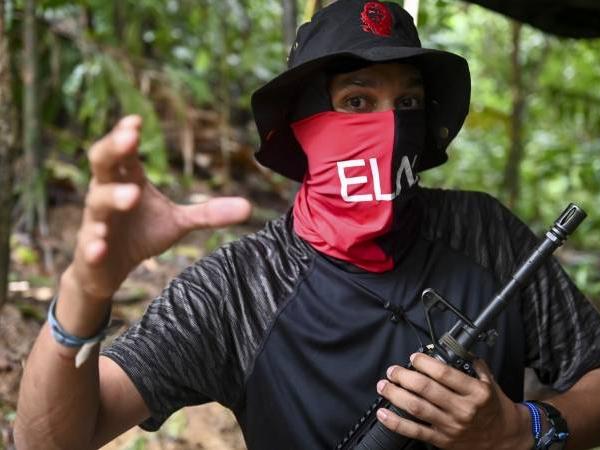
Duque has presented the death of alias “Uriel”, third commander of the ELN’s Western War Front, as a great blow to the insurgency, privileging the search for a military victory. However, the ELN’s revolutionary struggle has historically survived large military blows; for example, it revived after Operation Anorí in 1973, in which almost all the guerrilla’s commanders were killed, thanks to their deep roots in their social bases. Therefore, in our view, the armed conflict with the ELN can only be resolved via a political negotiation.
For any future negotiation to be successful, we have argued that it’s crucial to understand each side’s perspectives. This means situating the ELN’s discourses today about the challenges for peace within the context of their identity narratives; not to take these as absolute truths, nor to refute them, but to understand them as signs of a historically constructed mentality which influences their decisions. Next, we summarise the ELN’s proposals for peace throughout history, then we analyse four obstacles which the ELN has outlined to a negotiated peace, whose most recent expression is found in a speech made by “Pablo Beltrán”, member of the ELN’s Central Command (COCE), in a virtual conference in the National University of Colombia in July 2020. Beltrán participated from Havana, where he has been since 2018 together with “Gabino”, the ELN’s maximum commander and part of the COCE, and four other members of the National Directorship, all delegates for peace negotiations with the Colombian government.
The ELN’s Armed Struggle and their Proposals for a Negotiated Peace
The ELN launched themselves publicly in January 1965, with the so-called Simacota Manifesto, in which they explained their armed uprising as a revolutionary program to free the country “from the international monopolies and the Creole oligarchy”. During their first 25 years, the ELN did not consider a political solution to their armed struggle, staying faithful to their motto “not a single step back, liberation or death”. While other insurgencies opted to participate in a peace process with Belisario Betancur’s government in the 1980s, the ELN expanded, believing they would eventually take power militarily.
This changed in 1992, with the peace talks of Caracas and Tlaxcala between the government of César Gaviria and the Simón Bolívar Guerrilla Coordination, a platform where the ELN converged with the Revolutionary Armed Forces of Colombia-People’s Army (FARC-EP), among other insurgencies. In the framework of these talks, the ELN proposed to hold three “national encounters” and a series of regional dialogues, where different social sectors could contribute their proposals for peace. They urged for a peace agenda to be agreed which would respond to the demands of various sectors of society, and proposed a negotiation agenda which included the equitable redistribution of wealth and power, sovereign control over natural resources (in particular with respect to foreign extractive industries), the dismantling of paramilitary forces, and reparation to victims.
Although these dialogues failed, since then, the ELN has published various proposals for peace, based on participation and social dialogue, including in the framework of negotiations with the government of Álvaro Uribe, and then with that of Juan Manuel Santos, with whom an agenda was agreed that took up several of the ELN’s demands in the 1990s. Despite some progress in that negotiation, the parties did not manage to reach a final agreement, and the peace process was left in the hands of Iván Duque, who ended it after the ELN exploded a bomb in the General Santander Police Cadet School in January 2019.
To analyse the possibilities of a negotiated peace, it is important to examine the ELN’s peace agenda; but it is perhaps even more important to understand how this guerrilla understands the obstacles to peace. These reveal their perception of the other with whom they would have to negotiate. As peace accords are by nature product of a process of contestation between former enemies, it is crucial to look at the ELN’s perceptions of their counterpart.
The Obstacles in 2020
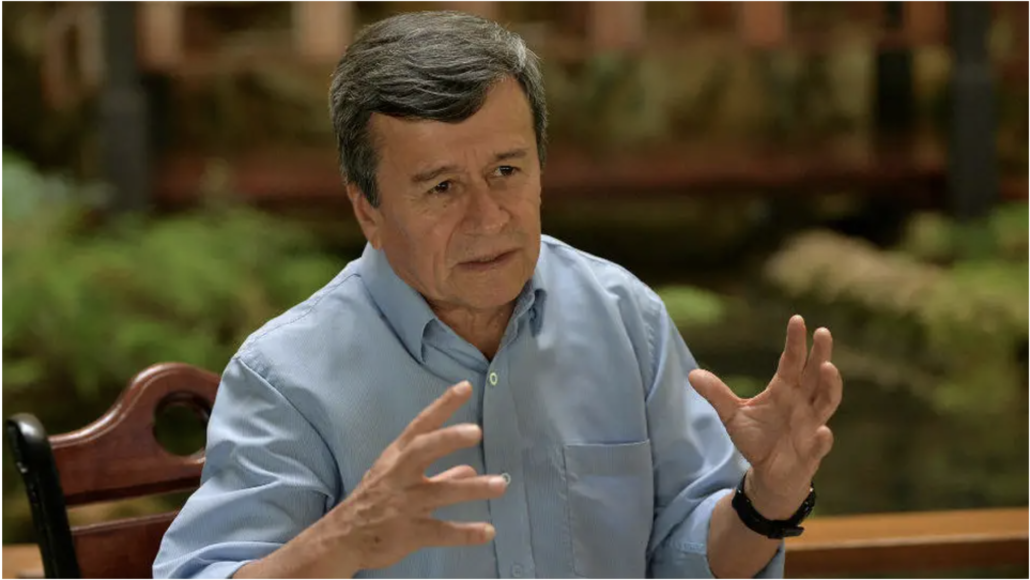
In his speech in the National University, Beltrán argued that there are four obstacles to peace. Three of these have to do with the ELN’s reading of their counterpart in negotiations – in his words, “the dominant classes”. The fourth is related with the geopolitical context, in particular, with the USA – in his terms, “the North American empire”. To summarise, Beltrán said: (1) that the dominant classes exterminate their opponents violently; (2) that these classes “do not want to change” the economic model, the political system, nor the distribution of land, “because they are comfortable”; (3) that these classes are not willing to recognise their own responsibilities, but they want the guerrilla to acknowledge their violent actions; and (4) that holding a peace process in Colombia would be useless without a change in Washington, because Trump uses Colombia as a sidekick in his attack to Venezuela, and creates “an environment of more war” in the region due to his policies of forced eradication, which go against the policy of illicit crop substitution agreed in the 2016 peace accord, and actions such as sending troops to Colombia.
This is the ELN’s interpretation – or at least, of those in Havana. The ELN is not a homogenous entity – it is a complex ecosystem composed of individuals and fronts in different places, with different life histories and war experiences. The separation between the negotiating team in Cuba and the rest of the ELN in Colombia has important implications. According to the ELN’s internal regulations, when a member of the National Directorship is outside of the country, he loses his commandership, and cannot give orders, which implies losing a certain amount of discursive leadership on the troops’ identity. There is also a political division in the ELN, between one sector that is interested in exploring peace negotiations (which would include Beltrán), and a more hard-line sector (which included Uriel) – which does not mean they are not able to act in a united way. With the Interpol arrest warrant which Iván Duque requested in 2019, the negotiators in Havana cannot return to Colombia, and this increases the effects of the separation. The government interprets this as a military triumph, by putting several commanders and the maximum leader of the ELN out of combat action, but this also has implications for the ELN’s internal leadership.
However, guerrilla organisations, although they are heterogenous, do reproduce identities, culture, and shared interpretations of reality. A historical analysis of the obstacles which the ELN has identified throughout history allows us to assume that Beltrán’s speech represents the interpretation of a great majority of the ELN membership and their bases, although some sectors may emphasise some points more than others, depending on regional dynamics and local leaderships. For a negotiation to be successful, the ELN would have to see a possibility of change at least in one of these four obstacles: that is, they would have to see a window of opportunity for the “dominant classes” to change, and/or the “North American empire”. Could the ELN interpret Biden’s election as a change in the panorama?
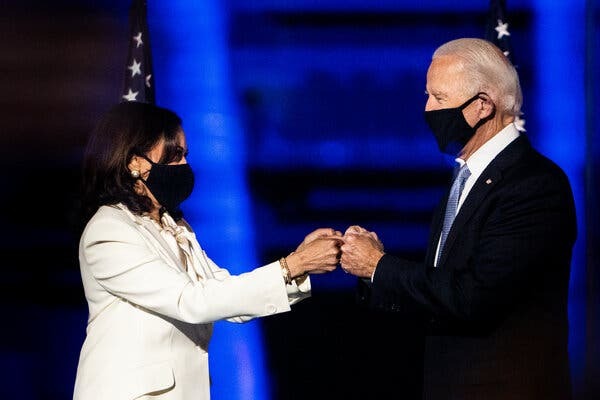
The arrival of the Democrats to the White House will signify a 180 degree change in American foreign policy, particularly with regards to Latin America. The new administration will probably seek a diplomatic solution to the Venezuelan crisis and support the Colombian peace process. Biden’s first months are an opportunity to sow the seeds of a geopolitical context that is favourable to peace in the region, and the ELN is aware of that. However, it will be more difficult for the ELN to perceive any changes in the other obstacles.
The Obstacles in Historical Perspective
In the middle of the exploratory attempts of negotiations with the Uribe government, the ELN published a communiqué on 25 August 2005, which set out five obstacles for peace they perceived at that moment. To summarise, the five points were: (1) the negation of the “social, economic and political causes which gave rise to the conflict”; (2) the conception of peace as “an issue between the government and the insurgency, instead of seeing it as something which involved all Colombians; (3) the negation of the profound humanitarian impacts the conflict has caused on the poorest sectors of society; (4) the government’s negation of the armed conflict; and (5) the “false negotiation between the government and the paramilitaries”, because “there was never a war between them, there has always been cooperation and coordination”.
There are evident continuities in the interpretations of 2005 and 2020. Beltrán’s speech focused explicitly on his perception of the “other”, who he blamed for the failure to progress in peacebuilding in Colombia. The 2005 communiqué constructs a more diffuse “other”, which does not only include Uribe’s government (mentioned explicitly in two of the points), but refers to a more generalised tendency among the elites of negating the political nature of the conflict, its impacts on society, and the need for peacebuilding to involve the participation of all Colombians. There are two important conceptual continuities between these two discourses. First, the idea of a widespread lack of willingness to recognise the origin of the conflict in the country’s social, economic and political inequalities. In Beltrán’s speech, this is reflected in his argument that “the dominant classes do not want to change”. Second, the conception that the negotiations with the United Self-Defense Forces of Colombia (Autodefensas Unidas de Colombia, AUC) was a farce, which in Beltrán’s speech is reflected in the idea that “the dominant classes do not want to recognise their responsibilities”.
Are the Obstacles Real?
To speak of “the dominant classes” in Colombia is to refer to an even less homogenous entity than the ELN. It is not an organisation with internal regulations and membership, within which one can establish who belongs and who does not. For that reason, the ELN’s perception of their “other” with whom they would have to negotiate is more diffuse than the government’s; but that is the nature of insurgencies. The ELN has developed their diffuse perception of their counterpart at least since 1992, when they proposed to discuss twelve issues with society in order to resolve the conflict, but identified “the Colombian oligarchy, transnational capital, and the Pentagon” as the greatest obstacles “to the democratising process”. The sector to which they refer encompasses the country’s most powerful families in politics and economic terms, and socioeconomic elites (bureaucratic, administrative, military, legislative and judicial elites, as well as business owners), which converge diffusely in clubs, companies, associations, public and private institutions, and all kinds of transnational networks.
There is evidence which partly supports the ELN’s interpretation. The recent book by Andrés García Trujillo, ex advisor to the Office of the High Commissioner for Peace during the Santos government, reveals the contradictions within that government, wherein some sectors were in favour of a real redistributive rural reform, but others were not willing to permit meaningful changes. After the triumph of the No in 2016 and Duque’s election in 2018, the peace accord’s redistributive agenda has been greatly weakened. However, this does not rule out the possibility that in the future, a majority of elites could accept and promote some minimum transformations in the social, economic and political inequalities of the country; perhaps not to the degree the ELN hopes, but that is what negotiations are about – ceding on both sides. The key will be to evaluate the balance of political power in the moment of opening a future negotiation: are there sufficient progressive elites in different positions of power, both in Congress, national and local government, and in Colombia’s central economic associations, to win over the more conservative elite, who are more reluctant to lose some of the benefits they get in the unequal structure?
The problem of redistribution is also reflected in the problem of acknowledgement of responsibilities. William Shakespeare’s tragedy, Romeo and Juliet, tells the story of two families, the Montague and the Capulet, locked in a bloody war for years. The play ends with the deaths of Romeo and Juliet, lovers condemned by fate to fall in love with someone with the wrong surname. Over their dead bodies, the heads of each family lament their losses, recognise the losses of the other, and the need to end the war to avoid more suffering. This is a model of two parties recognizing their responsibilities in an equitable manner. In practice, it is difficult for a guerrilla group and a government, as representative of the elites of its society (a representativity which varies with each administration), recognise each other as equals in this way, especially in a democracy, in which there is no regime change. However, the Comprehensive System for Truth, Justice, Reparations and Non-Recurrence created by the 2016 peace accord has opened an opportunity for all parties who participated directly in the conflict to recognise their responsibilities. There are mechanisms by which both the government and the ELN could in some way acknowledge their part in the atrocities of the past, which would mean participating in the System in a sincere and honest fashion, and expressing something of contrition. The question is whether both parties are willing to take this opportunity.
The issue of paramilitarism has been one of the knots in the peace negotiations due to the different interpretations of the conflict. The nature and the name of the post-demobilisation armed groups – the Gaitanista Self-Defense Forces of Colombia, the Rastrojos, the Black Eagles, among others – is an ideological, legal and historical battlefield. Some interpret them as “the same as before”, with the same systematic links with the state. others interpret them as criminal armed groups at the service of drug-trafficking. Existing research documents both continuities and ruptures, but how to name these groups and how to speak of their nature continues to be a divisive topic. When Beltrán speaks in 2020 about the necessity for the “dominant classes” to recognise their responsibilities in the conflict, he is building on the ELN’s historical interpretation, evident since 2005, that paramilitarism is one of Colombia’s central problems, in which the country’s elite has great responsibility. The reality of these links is complex, and can only be proven via judicial and non-judicial investigations by the Comprehensive System and other institutions involved in implementing the peace accord, but meanwhile, it is urgent to dismantle these groups, independently of how they are named, because the principle obstacle to peace today is the new wave of violence which is growing, with the assassination of nearly 1000 social leaders and 237 former combatants of the FARC since 2016.
The Tasks at Hand
To open the window of opportunity that the new American government offers, the ELN would have to recognise the possibilities of this new geopolitical conjuncture, but also to be willing to recognise the government’s perspectives. Likewise, both the Duque government and the networks in what the ELN conceives of as the “dominant classes” would have to adapt to the new geopolitics that Biden’s arrival implies, as well as other regional changes such as the triumph of Arce in Bolivia and the Chilean referendum. This would mean rebuilding the relationship with the Democrats – affected by the Colombian Ambassador in Washington and other Colombian politicians’ participation in the Trump campaign – de-narcotising bilateral relations and contributing to a comprehensive solution to the problem of illicit crops; dismantling the Cold War-style anticommunist discourse which has dominated the regional cooperation agenda; and revitalising the focus on peace and human rights which was at the centre of Biden’s agenda when he was Obama’s Vice-President. With this type of changes, Duque’s coalition could become more moderate, taking distance from the more radical factions. But if Duque wants to open a negotiation with the ELN, he will have to understand their historically constituted mentality. Learning from the errors of the past, and not focussing exclusively on military strategies which only serve to recycle violence, the government could encourage the ELN to identify a change in the obstacles to peace. Biden faces many difficulties in recuperating the stability in the region, but a peace process with the ELN would be a key task, and supporting it would be a historical opportunity.
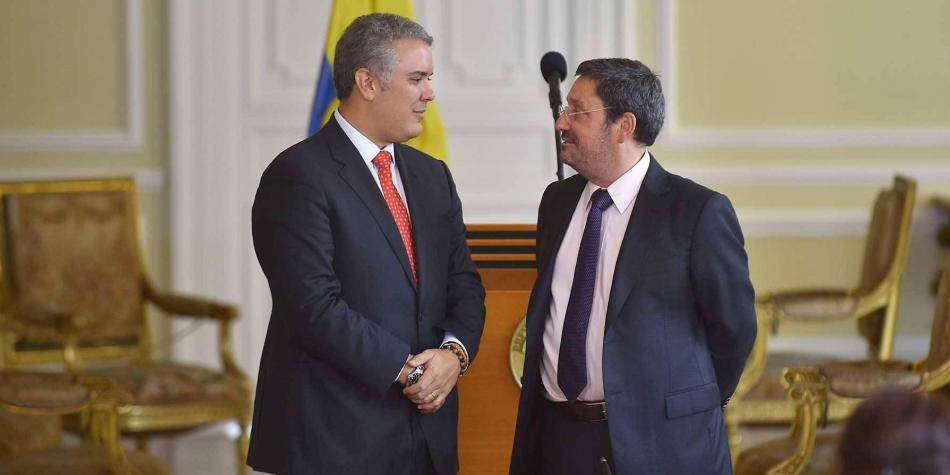
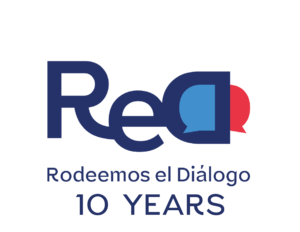
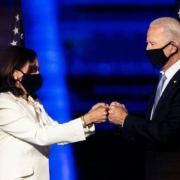 Biden y Harris (Tomada de: New York TImes - ReduxStock)
Biden y Harris (Tomada de: New York TImes - ReduxStock)
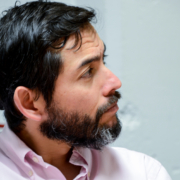

 Biden y Harris (Tomada de: New York TImes - ReduxStock)
Biden y Harris (Tomada de: New York TImes - ReduxStock)
Leave a Reply
Want to join the discussion?Feel free to contribute!